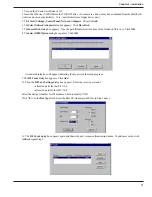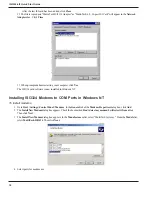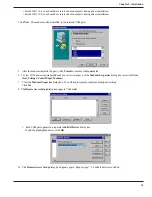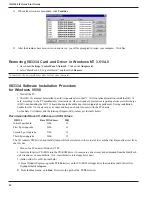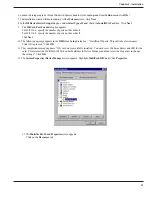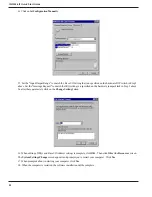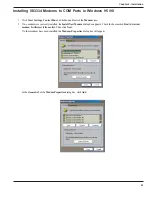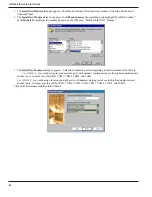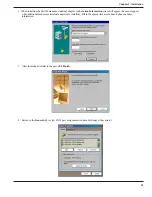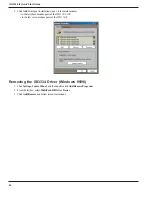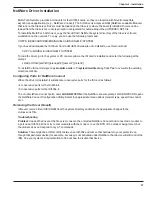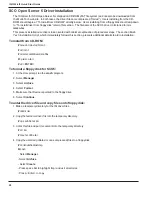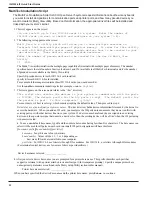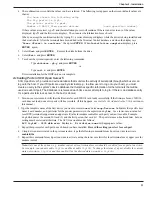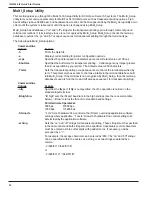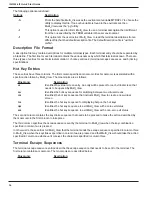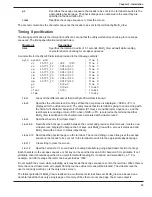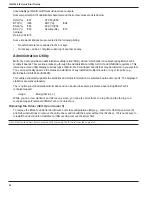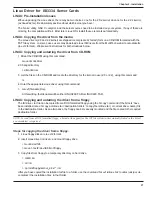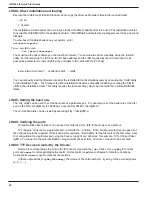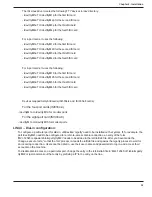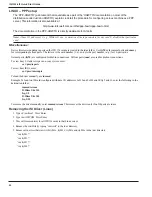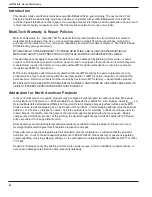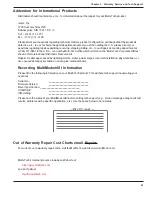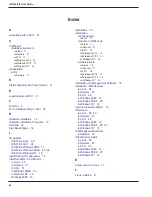
Chapter 2 - Installation
31
4. The confirmation screen lists the values you have selected. The following text appears on the screen (default values are
shown):
You have chosen the following setup
The
tty
prefix is
ttyl
.
The printer prefix is
prnl
.
Number of Multi_View pseudo devices
[
user-specified number
].
If these values are correct, type
Y
and the installation process will continue. If there is an error in any of the values
displayed, type
N
and the first screen displays. Then re-enter the information for each card.
When you accept the confirmation list (by typing
Y
), a series of messages displays while the driver is being installed and
the kernel rebuilt. After the terminals have been added to the Terminal Control database, and when the display says
Press <Enter> to continue
:, then press
ENTER
. When
Installation complete
displays, press
ENTER
again.
5. Select
Host
and press
ENTER
. Remove the diskette from the drive.
6. Select
Exit
and press
ENTER
.
7. To reboot the system (required), enter the following commands:
Type
shutdown -g0-y
and press
ENTER
OR
Type
init 6
and press
ENTER
.
Driver installation for the ISIHP card now is complete.
Activating Ports in SCO Open Server 5
SCO Open Server 5 provides a device database that monitors the activity of serial ports through which users can
log onto the host. If your ISI ports are used by terminals (e.g., to allow users to log onto your host), you must
create an entry in the systems device database that furnishes specific information for the terminals that will be
used on each ISI port. The database is referenced each time a user attempts to log in. If there is no database entry
for a particular terminal, access to the host is denied.
1. Turn on your system and verify that the firmware for each ISI3334 card loads successfully. If the firmware for any ISI3334
card does not load, none of its ports will be accessible. (If this happens, see
Multi-Techs Administrative Utility
section in
this manual.)
2. Type the complete name of the first device you want to create in
usr/lib/uucp/Devices
. Substitute the specific base
name, board number, and port letter for the generic parameters in the expression
ttylbx
. Use a lower-case
x
value for
local DTE (terminal) support and an upper case
X
value for modem control for each port you want to enable. Example:
ttyl2A
denotes the second ISI card (2) and the first port on that card (A). The port status can be altered later, but one
setting must be selected at this time. The ACU line would read as follows:
ACU ttylbX - 9600
dialer name
. Replace
b, X
and
dialer-name
with appropriate values.
3. Repeat this process for each port on each board you have installed.
Record the setting you select for each port.
4. Using device names created in the previous section, type the following command for each port you want to activate:
enable ttylbx
5. Repeat this command for each port you want to activate, using the lower case letter for local terminal use or upper case for
modem control.
Note:
Only one of the options (e.g., modem control or local terminal access) should be enabled for any port at one time.
For example, you cannot enable
ttyl1a
and then enable
ttyl1A
. To change the status of a port, disable the current
status (
disable ttyl1a
) and then enable it for the desired status (
enable ttyl1A
).
Содержание MultiModem ISI ISI3334/4
Страница 5: ...Chapter 1 Introduction and Description ...
Страница 8: ...ISI3334 4 8 Quick Start Guide 8 ...
Страница 9: ...Chapter 2 Installation ...
Страница 41: ...Chapter 3 Service Warranty Tech Support ...
Страница 44: ...ISI3334 4 8 Quick Start Guide 44 ...
Страница 45: ...Index ...
Страница 48: ...ISI3334 4 8 Quick Start Guide 48 ...

